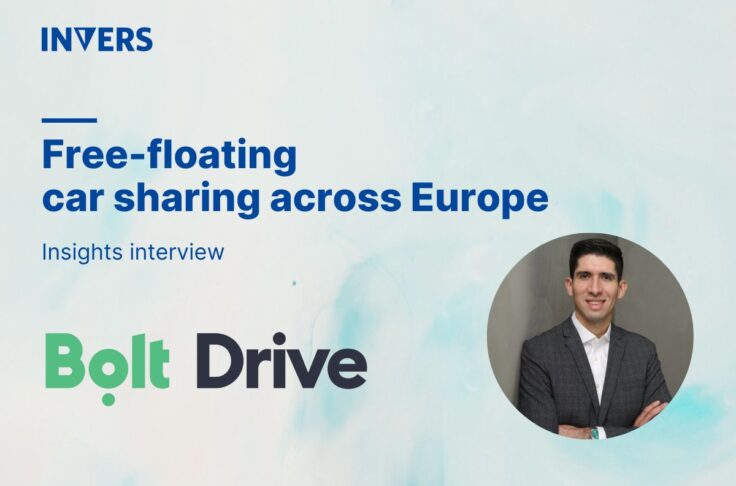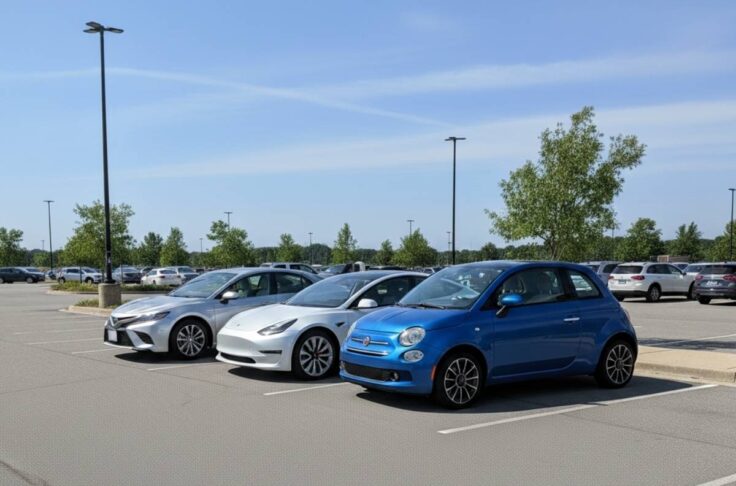4 Benefits of a Single-Vendor Strategy in Car Sharing

Summary
It’s a difficult decision whether to choose multiple vendors for your car sharing telematics or rely on a single-vendor strategy. While multiple vendors offer greater flexibility to select the best option for your individual needs, a single vendor comes with other operational benefits: Seamless integration, streamlined support and communication, future-proofed operations and better scalability. At INVERS, we believe that a true single-vendor partnership is the key to operational excellence and an outstanding car sharing experience for your customers. In this article, you will discover why.
Fleet Managers and Their Daily Challenges
Losing hours a week for troubleshooting technical issues with multiple vendors? That’s the everyday life of Tom. Last month, he joined a car sharing operator in his hometown. As Fleet Manager, he is responsible for more than 1,000 vehicles. While all vehicles run on the same telematics, 500 of them are equipped with a second vendor’s damage detection technology. Yesterday, the provider for their damage detection solution introduced a breaking change in their API. Tom had to pull developers off their task to improve the user app, dig into the API documentation, and troubleshoot the issue for the entire day. At the end, it was yet another challenge for Tom, who is already dealing with a high demand for support:
- Telematics:
Especially in areas with poor cellular connection (e.g. underground parking), their cars often remain offline. While Tom is in ongoing discussions with the telematics provider to resolve this issue, customers are left frustrated. - Damage Detection:
The second supplier’s integrated module requires a second telematics unit to be installed in the vehicle. This forces Tom to use two similar systems with different data structures and slows down infleeting. Installers have to handle two telematics units, two installation instructions, and switch between different software for configuration. - Driver Behavior Monitoring:
This feature is not yet ready for fleet-wide rollout because the data doesn’t show up correctly in their back end. The given data has a completely different format compared to the telematics or damage detection data. API integration is proving to be extremely challenging, resulting in an algorithm that does not provide reliable driver behavior information.
Why Car Sharing Operators Choose a Multi-Vendor Strategy:
As Tom is experiencing difficulties with multiple vendors, he wants to understand the reasons for this approach. Does it have an impact on their profitability? He asks his colleague Sarah, why they decided to buy additional features from a different vendor rather than using a single vendor for both telematics and features. This is her answer:
Hi Tom,
These are the key benefits of a multi-vendor approach for our car sharing operations:
-
Risk Diversification:
The most obvious argument for a multi-vendor decision is not being dependent on one single company. Imagine our single technology has an outage. It would affect our entire fleet. Customers wouldn’t be able to use our service anymore. With multiple vendors, a technical problem with our damage detection solution would not necessarily affect our telematics. So, customers would still be able to start and end rentals, meaning there is no negative impact on customer satisfaction. It’s just that the damage detection wouldn’t work until it was fixed. This is a less problematic situation.
-
Greater Product Flexibility:
Choosing more than just one vendor allows us to select the solution that best suits our needs. We are not tied to the products of one particular provider. Here is an example: We decided to analyze driving behavior because we had a number of accidents caused by speeding. Our telematics provider does not offer such a tool. With a single-vendor approach, we had to deal with this or move all our technology to a provider that offered driver behavior monitoring.
-
Best-of-Breed:
Last but not least, we guarantee the best quality with best-of-breed solutions. Having the flexibility to change technology providers is great, but always having the best solution tailored to our needs is even better. This ensures that our car sharing operations set the highest quality standards and offer our customers the best possible user experience.
I hope this helps.
Best regards,
Sarah
Why Car Sharing Operators Choose a Single-Vendor Strategy:
Knowing the advantages of a multi-vendor approach, Tom is curious about the other perspective. Why is relying on a single vendor better than choosing multiple vendors? To find out, he writes to his friend Nick, who works for another car sharing operator. Here’s Nick’s reply:
Hi Tom,
This is why we decided to rely on a single vendor for our telematics and features:
-
Seamless Integration:
A few years ago, we migrated all parts of our tech stack to a single vendor. Before that, rolling out new features to the entire fleet was a huge challenge. API integration took weeks and months and made the whole integration process much more complex.
With one supplier, API integration is no longer an issue for new features. The API is already fully integrated, allowing us to access more data points and providing standardized information. There is no need to harmonize different data structures from different APIs, e.g. UTC vs. local time. We can even combine different kind of data from different telematics use cases – e.g. matching driving analysis and damage detection for a better burden of proof.
During our pilot for a new driving analysis feature, we were able to test the solution for a couple of weeks without any effort because the sensors were already in the cars. For the final roll-out we didn’t even have to take the vehicles out of service. Additional data points could simply be unlocked remotely as the telematics were already integrated.
None of our vehicles have a second telematics unit installed. All features work perfectly with the integrated telematics from our single vendor. With one click in the back end, we can roll out updates and new features to the entire fleet. There is no need to coordinate multiple updates from different vendors, ensuring the latest technology and an updated ecosystem at all times.
-
Streamlined Support and Communication:
One vendor means one support contact for all issues. I have a dedicated support contact at our provider that knows our service and the entire tech stack. The support can help us troubleshoot and is more open to catering to our individual needs. I always know who to talk to, enabling faster troubleshooting and problem resolution. The back and forth between multiple email threads and phone calls looking for the source of problems is eliminated.
-
Future-Proof Operations:
We rely on a single vendor focused on car sharing. This is our answer to risk diversification. For some companies, car sharing technology is only a small part of their business. If the vendor is not only focused on car sharing, the branch could be closed for financial or strategical reasons. For us, it could be a risk to choose a product that might no longer be supported in the future. A provider deciding to pivot away from the car sharing industry means no further updates, and we would have to start looking for a new solution again.
-
Scalability:
Last year, I was responsible for a major expansion campaign that added 500 new vehicles to the fleet. Our installers were able to finish the infleeting process in a very short time, because they’ve grown accustomed to the hardware, the installation process, and even know how to troubleshoot minor issues themselves.
Based on our experience, I can totally recommend going for a single-vendor approach.
Best regards,
Nick
Multi- vs. Single-Vendor Strategy in Car Sharing:
Now that Tom has all the information, he wants to share an overview with his Chief Technology Officer. He has already realized that each approach has its advantages for a car sharing business. The question is, which criteria is most important for their operations?

What Is Your Decision?
Are you in a similar situation to Tom? Tired of managing multiple vendors, losing track of productivity and seeing customers complain about connectivity issues?
Committed to leading the industry in innovation and improvement, INVERS is here to assist you. We believe that a true partnership is key to operational excellence and an outstanding car sharing experience for your customers.
That’s why we’ve developed the market-leading CloudBoxx and advanced platform extensions like Damage Detection, Fleet Hawk and Driving Analysis. We want to provide you with the best available car sharing technology for your individual needs – all from a single source. Because when you succeed, so do we.
To guarantee your vehicles are always online, we think about connectivity beyond the hardware level. Our Managed Connectivity supports you with an outstanding reliability of 99,9 %. Making sure your vehicles are online at any times. Our cross-functional support team is available to you around the clock. With the experience of 200,000 trips and 15 million events per day, our experts are your go-to-people for everything related to connectivity.
It is not a threat to have a single partner for telematics and features – it is a unique opportunity. Are you interested in further evolving the car sharing landscape together? Contact us now.


